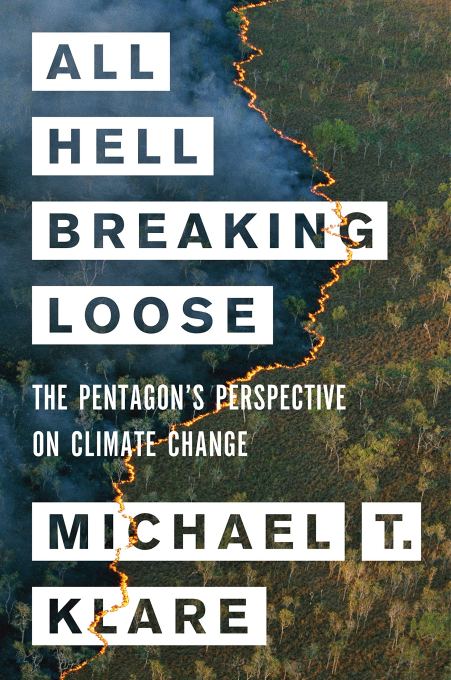- August 28, 2021
- by:
- in: Blog
Welcome back to This Week in Apps, the weekly TechCrunch series that recaps the latest in mobile OS news, mobile applications and the overall app economy. The app industry continues to grow, with a record 218 billion downloads and $143 billion in global consumer spend in 2020. Consumers last year also spent 3.5 trillion minutes using apps on Android devices alone.
Welcome back to This Week in Apps, the weekly TechCrunch series that recaps the latest in mobile OS news, mobile applications and the overall app economy.
The app industry continues to grow, with a record 218 billion downloads and $143 billion in global consumer spend in 2020. Consumers last year also spent 3.5 trillion minutes using apps on Android devices alone. And in the U.S., app usage surged ahead of the time spent watching live TV. Currently, the average American watches 3.7 hours of live TV per day, but now spends four hours per day on their mobile devices.
Apps aren’t just a way to pass idle hours — they’re also a big business. In 2019, mobile-first companies had a combined $544 billion valuation, 6.5x higher than those without a mobile focus. In 2020, investors poured $73 billion in capital into mobile companies — a figure that’s up 27% year-over-year.
This Week in Apps offers a way to keep up with this fast-moving industry in one place with the latest from the world of apps, including news, updates, startup fundings, mergers and acquisitions, and suggestions about new apps and games to try, too.
Do you want This Week in Apps in your inbox every Saturday? Sign up here: techcrunch.com/newsletters.
Changes to the App Store ecosystem dominated the headlines this week. In South Korea, legislators are set to vote on a landmark bill that could end Apple and Google’s payment exclusivity on their app stores. Meanwhile, Apple dropped commissions to 15% for news publishers’ apps, if they agree to participate in the Apple News ecosystem. Apple also agreed to settle a class-action lawsuit from U.S. app developers that, pending court approval, will introduce a few changes to App Store rules — the most notable being that it allows developers to communicate with their users outside of their iOS apps to tell them about other purchase options.
Top Story: The App Store settlement underwhelms
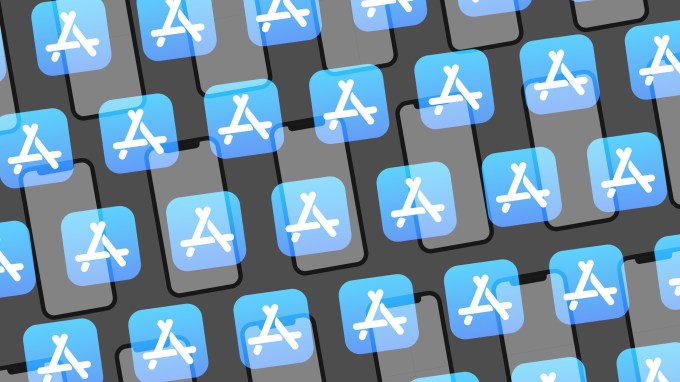
Image Credits: TechCrunch
As it turns out, this App Store settlement agreement isn’t really as earth-shattering as some headlines may have made it seem. For starters, Apple had already slightly adjusted its App Store policies in June when it clarified developers were allowed to communicate through email and text with their customers about other purchasing methods besides Apple’s own in-app purchases. But this was only permitted if developers weren’t using contact information obtained from within the app. With the new settlement, that changes a bit.
Developers can now take the smallest of steps forward as they are allowed to inform users — well, users who have consented to receive offers via email or other communications — about alternative methods of payment besides in-app purchases. That means developers will also have to collect users’ contact information from their app where users may already be logging in using third-party credentials like Facebook’s, Google’s or even Apple’s own sign-on systems. (Apple’s system, of course, has an option to hide your email address from developers. Wow, someone was thinking ahead there!)
But this change wasn’t what developers want. They actually want to point users from inside their app to their website where they could market their own payment and subscription options — possibly even at a reduced rate since they wouldn’t have to share a commission with Apple. Even if Apple allowed this more permissive action, it’s likely many consumers would continue to use in-app purchases for the sake of convenience. The real concern on Apple’s part is that such a change could redirect significant income from the App Store’s biggest moneymakers, like games, to payment systems outside the App Store.
The settlement agreement proposes other changes as well, such as the expansion of price points from fewer than 100 to more than 500. Apple also agreed to publish a transparency report on the App Review process. (This could potentially be an even bigger deal than the App Store rule changes, as it could push Apple to address some of the outstanding issues with erroneous rejections, app scams and delays.) And Apple said it would establish a $100 million fund for U.S. developers less than $1 million per calendar year, which will pay out in a range of $250 to $30,000, depending on the size of the developers’ app business.
Developer responses to the settlement

Image Credits: Apple
Apple put out the news of the settlement in its usual style of a polished press release, albeit one buried late on a Thursday night with reporter briefings scheduled for hours where they could easily get missed. Apple, in its release, touted the “even better business opportunity” this represented for developers whose feedback it “appreciates” and whose “ideas… helped inform the agreement.”
We wanted to hear what developers thought about this change. Here’s a sampling of feedback from the community:
Ryan Jones, founder and CEO of iOS flight tracker Flighty (whose Twitter thread offers a good summary of the news):
“I just keep praying Apple will wake up and change the rules themselves but today wasn’t that day. Its not a great idea to let 70-year-old bureaucrats who get tech support from their grandkids write technology ecosystem law. I just have to believe Apple is realizing this is a ticking time bomb – they have to change it themselves, or we’ll all pay the consequences for years to come. There’s real resentment building the way Apple PR keeps basically gaslighting us. Anyone who can read critically can immediately tell there’s zero substance to this announcement. They need to step up and make changes before courts do it for them.”
James Thomson, indie developer and creator of PCalc app:
“On the face of it, it doesn’t seem like the announcements are particularly significant for us. It’s mainly clarification on existing rules that were already in place. It’s still not permitted to link within your app to an alternative payment mechanism, but you can at least email the customer to tell them about it, if they have opted-in. It’s not 100% clear to me that wasn’t allowed in the first place. The developer fund is also U.S. only, so that doesn’t help us. Overall, I don’t see this doing very much to change the opinion of those calling for antitrust legislation.”
Becky Hansmeyer, indie developer behind YarnBuddy and Snapthread apps:
“Apple has made zero concessions in this settlement. App Store search and discovery are still terrible, developers still can’t reference outside payment methods within their apps, and App Review is still a needlessly draconian process that discourages innovation and punishes good actors while letting scams run rampant. The ‘Small Developer Assistance Fund’ is nothing more than payouts to class members as a form of self-punishment. Nothing about this is good for developers, or consumers.”
David Heinemeier Hansson, Basecamp co-founder, developer of HEY email app and noted Apple critic:
“…The trophy of this settlement, as presented in the press, is supposedly that developers can now tell their customers where to buy services outside the app. Except no, that’s not actually what’s happening! Apple is simply ‘clarifying’ that companies can send an email to their customers, if they’ve gotten permission to do so, on an opt-in basis. That email may include information about how to buy outside the app. So the steering provisions of the App Store, that developers are not allowed to tell users inside their app or on the signup screen about other purchasing choices than IAP – the only places that actually matter! – is being cemented with this ‘clarification.’ It draws a thicker line, asserts Apple’s right to steer in the first place, and offers the meaningless concession of opt-in email, which was something developers had already been doing.”
Kosta Eleftheriou, FlickType developer who’s also suing Apple over lost revenues due to App Store scams:
“Apple’s draconian anti-steering provisions remain in place just as before. This settlement is a meaningless concession for developers who all see what PR game Apple is playing. And Apple labelling the restitution they’ve agreed to pay as an ‘assistance’ fund is deceitful and shameful: Developers aren’t asking for help, they are asking for fairness.”
Jacob Eiting, CEO of RevenueCat, which offers app developers a suite of tools for their subscription-based apps:
“The changes proposed in the settlement are largely a repackaging of existing work Apple has done, a much smaller change than it seemed from Apple’s press release. They are rolling back one recently enacted anti-steering rule, but leaving all other anti-steering rules in place. The settlement also puts into place commitments to programs that most likely weren’t going anywhere anyway. They’ve also agreed to pay out $100M to small developers as a settlement, acting as if it’s some magnanimous gesture. However, it’s in exchange for developers waiving any claims of unfairness in Apple’s fees for the last 6 years. Seeing how good Apple has gotten at patting themselves on the back, this will likely be dragged out any time Apple needs evidence of developer friendliness for years to come.”
Aaron Pearce, indie iOS developer behind a suite of HomeKit-connected apps including HomeRun, HomeCam, HomePass and others:
“To me, there weren’t any real changes that matter. These are mostly clarifications of existing rules or statements. The pledge to keep the Small Business program is nice, but no one expected that to go away. Keeping App Store search the same was a near guarantee previously. The only real change is introducing more pricing points that I cannot see helping developers in a huge way in the immediate future. The $100 million fund is a lawsuit settlement, not Apple being generous to help developers. I find the PR spin on these ‘changes’ to be disingenuous. They aren’t fixing the core problems with the App Store that small or large developers face when they are simply trying to ship products to their customers.”
CAF, a nonprofit representing developers including Epic Games, Spotify, Tile and dozens of others pushing for regulation of app stores:
“Apple’s sham settlement offer is nothing more than a desperate attempt to avoid the judgment of courts, regulators, and legislators worldwide. This offer does nothing to address the structural, foundational problems facing all developers, large and small, undermining innovation and competition in the app ecosystem. Allowing developers to communicate with their customers about lower prices outside of their apps is not a concession and further highlights Apple’s total control over the app marketplace. If this settlement is approved, app makers will still be barred from communicating about lower prices or offering competing payment options within their apps. We will not be appeased by empty gestures and will continue our fight for fair and open digital platforms.”
Samantha John, CEO and co-founder of coding app Hopscotch:
“Nothing changed. You were always able to write whatever you wanted in your emails or website. They still are not letting you link to or mention an alternate payment processor inside your app. It’s a weird news story because it made me hopeful when I saw the headlines but nothing had actually happened.”
Overall, it’s seems developers aren’t impressed with this minor concession and it doesn’t seem this settlement will do anything to stop the push for increased App Store legislations.
Weekly News
Apple Platform Updates
- Apple released the seventh developer betas for iOS 15 and iPadOS 15 as well as watchOS 8 and tvOS 15. Among the notable changes, Apple announced its new service iCloud Private Relay would now be introduced as a public beta to gather more feedback instead of being enabled by default as part of the iCloud+ subscription service. The release notes indicate some websites still have issues with the feature, including showing content for the wrong region or requiring extra steps to sign in.
- Apple released a beta version of its TestFlight app testing platform to Mac developers for the first time. The beta only worked on macOS Monterey beta 5, which came out on August 10.
- Apple also released an update to the App Store Connect app, which now allows developers to create multiple TestFlight internal tester groups and configure build access for each one.
- Apple notified developers that local regulatory changes will require them to add the bank account holder’s address in App Store Connect, which must be done by October 22, 2021 in order to avoid an interruption in payments.
- Apple launched a new iOS app called “Siri Speech Study” to gather feedback for Siri improvements. The unlisted app was only open to invited participants who choose to share to Apple when Siri gets one of their requests wrong.
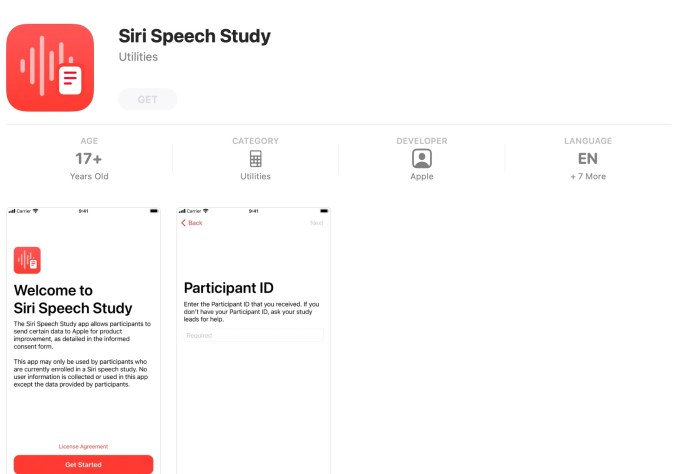
Image Credits: App Store screenshot
Google Platform Updates
- Google announced a change in how ratings and reviews on Google Play will appear to end users. Developers had complained how negative feedback that only affected users in one region could have brought down the rating for all. To address this, starting in November 2021, users on phones will only see ratings specific to their registered country. Then, in early 2022, users on other devices like tablets, Chromebooks and wearables, will see ratings that are only specific to the devices they’re on. Google says changes are rolling out to the Google Play Console which will help developers prepare for the changes, including dimensions like “Device Type” dimensions.
E-commerce

Shopify and TikTok for business with TikTok image of Kylie Jenner. Image Credits: Shopify
- TikTok and Shopify announced an expansion of their existing partnership to launch a pilot test of “TikTok Shopping” in the U.S., U.K. and Canada. The new service allows Shopify merchants with a TikTok For Business account to add a new “Shopping” tab to their TikTok profiles and sync their product catalogs to create mini-storefronts on their profile. They’ll also be able to tag products with links in videos. When viewers click to purchase, they’re redirected to the Shopify merchant’s website to complete the transaction.
- Instagram introduced ads on the Instagram Shop tab globally, rolling them out to all countries where the tab is available. Previously, the ads were tested only in the U.S.
Augmented Reality
- TikTok is building its own AR development platform, which was spotted on a website called TikTok Effect House. The company confirmed the creative toolset is in private beta testing, but characterized it as an early experiment.
Fintech
- WhatsApp Pay will get more prominent placement in the messaging app. Changes spotted in testing show the WhatsApp Pay shortcut button in between the sticker and camera buttons, making it easier to access.
Social/Creators
- OnlyFans flip-flopped on its porn ban. Initially, the company said it would ban sexually explicit content on its platform as of October 1 — a decision that was met with much criticism from the sex worker community who relied on the platform for their income. Creators also said they had received no heads-up from the company, which gave them less time to prepare. OnlyFans, meanwhile, blamed its original decision on pressure from banking partners and payout providers. Now, it’s saying it has received “assurances” from these partners that will allow its business to continue as usual. But the situation may have burned up creator goodwill, and some may now choose to move their businesses elsewhere.
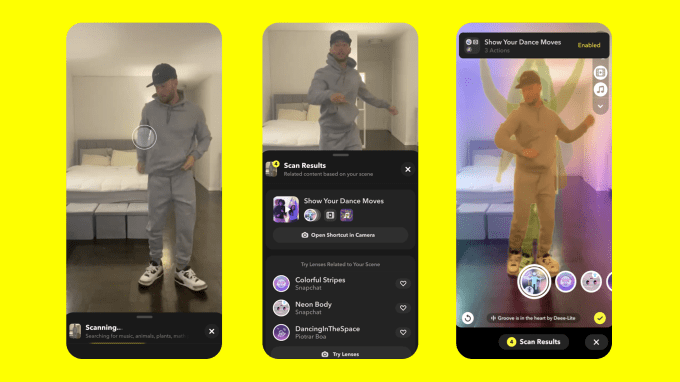
Image Credits: Snap Camera Shortcuts
- Snapchat on Thursday upgraded its two-year-old “Scan” feature which lets people use Snap’s Camera to explore the world around them. The new generation of Scan, which was relocated to be front-and-center in the Snapchat app, will now offer suggestions of different ways to use the Camera, including Camera Shortcuts and shopping features. Camera Shortcuts help people capture a moment by suggesting things like camera modes, Lenses and soundtracks relevant to what is seen through the Camera. Over time, Snap will introduce more Shortcuts, including those for its short-form TikTok competitor, Spotlight. With the update, users can now also tap into their screenshots of items they wanted to buy, then use Scan to find and purchase those outfits through Memories. For instance, you can scan a friend’s outfit then use Screenshop to find similar looks across brands. You can also use Scan with food and ingredients at home to get recipe suggestions. Snap says it sees potential for Scan not only on mobile, but also in its next generation of Spectacles glasses.

Image Credits: Snap Screenshot
- Instagram head Adam Mosseri announced changes to the app’s search feature on Wednesday. The changes will more prominently feature photos and videos in search results, alongside accounts and hashtags. The move makes Instagram search work more like TikTok’s.
- Instagram is also ditching the “swipe up” links in Instagram Stories in favor of Link Stickers, starting on August 30. The feature will be available to businesses and creators who are either verified or who have met the threshold for follower count, commonly said to be at least 10,000.
- TikTok is testing an extended video upload limit of five minutes or more. Some users have gained the ability to upload videos as long as 10 minutes, which indicates TikTok is experimenting with different lengths to gain feedback. The app in December introduced longer videos for the first time with the support for the three-minute video.
Messaging

Image Credits: Messenger
- Facebook celebrated Messenger’s 10th anniversary with new features that included games, effects, contact sharing and more. The company also confirmed it’s testing an integration that brings Messenger back into the Facebook mobile app, saying that it would give users an easy way to connect with people from where they already are. The company now sees Messenger more as the underlying “connective tissue” between its services, including one day, the metaverse.
- WhatsApp is working on message reactions, according to a leak from WABetaInfo, which keeps tabs on the app’s newest features. Users who aren’t on the supported version would receive a message telling them to update their app in order to gain the ability to see the message reactions (emoji) that others had sent. It’s not yet known which emoji will be offered as a part of the new feature.
Streaming & Entertainment
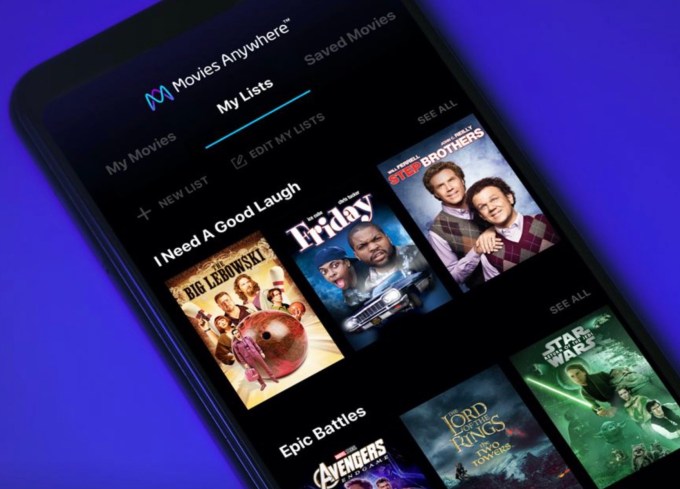
Image Credits: Movies Anywhere
- Digital locker app Movies Anywhere added a new feature that organizes users’ movie libraries into algorithmically generated lists, giving you an easier way to browse your collection by factors like genre, theme, actors, franchise and more.
- YouTube is rolling out picture-and-picture viewing for all U.S. iPhone users, starting with its Premium subscribers. The feature will allow users to watch videos in a mini player while browsing other apps on their iPhone.
- YouTube Music finally gets a WearOS version, but only for Samsung’s newest watches — the Galaxy Watch 4 or Galaxy Watch 4 Classic. The watches become available on August 27. Google didn’t say when the app will come to other WearOS devices.
- Spotify’s Podcasts Subscriptions service opened to all U.S. creators. Using the Anchor app, creators can mark select episodes as subscriber-only content, then publish them to Spotify and other platforms. Since its launch, more than 100 podcasts have adopted subscriptions. The company also expanded the array of price points from three to 20 options to meet creators’ needs.
- Clubhouse hid the account bios and images of its Afghan users in wake of the Taliban takeover of the country. The change impacted tens of thousands of users, but can be reversed if the user chooses.
Gaming
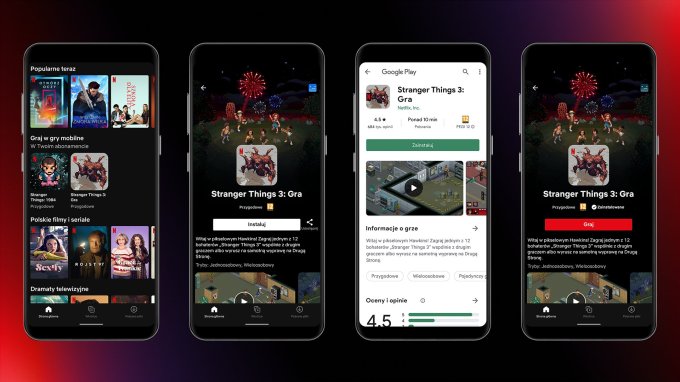
Image Credits: Netflix
- Netflix began testing mobile games in its Android app in Poland. The streamer, which said recently it would be expanding further into the mobile gaming market, said Poland was a good fit for the initial test because of its active mobile gamer community. The test will see listings for two “Stranger Things”-themed games inside the Netflix app, which direct members to the Google Play store to download. The games then require users’ Netflix credentials to start playing.
- After backlash from its community, Niantic reinstated the COVID safety and accessibility features it had launched in Pokémon GO during the pandemic, then later removed when it looked like things were getting back to normal (before the Delta surge). It’s unclear why Niantic believed it was the right time to pull the features, which allowed users to social distance while gaming, as they hadn’t impacted game revenues — 2020 was the game’s best ever year to date, earning the AR title over $1 billion.
- China’s largest indie game distributor, XD Inc., is planning to introduce its commission-free app store, TapTap, to global markets, Bloomberg reported. The company, which is backed by TikTok owner ByteDance and Alibaba, publishes its own titles to draw users to its app store. But shares of XD have fallen 60% since February over investor concerns about a model that relies on ads instead of commissions.
Health & Fitness
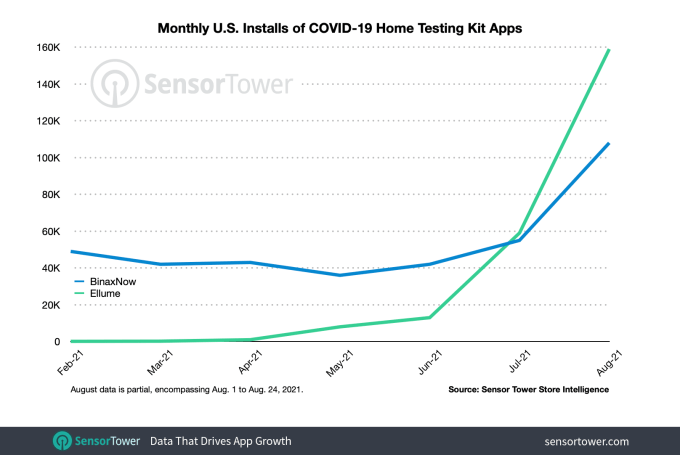
Image Credits: Sensor Tower
- Amid the Delta surge, downloads for the two top COVID-19 home testing apps in the U.S., BinaxNOW and Ellume, have spiked 134% month-over-month so far in August, after seeing 107% growth in July, according to Sensor Tower.
- Very few people used the COVID-19 apps powered by Apple and Google’s API in the U.S., an Insider investigation found. Only 2.14% of possible COVID cases were recorded in exposure notification apps across 26 U.S. states. The problem was likely hampered by the fact that launching apps was left up to individual states, instead of being a national effort as with the contact tracing apps built using the API in other markets. Less than half of U.S. states chose not to even build an app in the first place, limiting the tools’ reach further.
- Google pulled the plug on Streams, a U.K.-based clinician support app which was developed back in 2015 by DeepMind, an AI division of Google. The app had been used by the U.K.’s National Health Service, with a number of NHS Trusts inking deals with DeepMind Health, including London’s Royal Free and Taunton & Somerset. Google says the patient data the app processed will be deleted.
- Israel-based air quality measurement service BreezoMeter, which helps power Apple’s Weather app, introduced a new product, Wildfire Tracker. The feature can identify the edges of wildfires in real time using a combination of sensor data, satellite imagery and local eyewitness reports.
- A reference to Peloton’s unannounced rowing machine was discovered in its app’s code. The code also suggested the app would track things like average and max stroke rates.
Transportation
- Google is shutting down its Android Auto mobile app, aka “Android Auto for Phone Screens,” starting with Android 12. The company said Google Assistant driving mode will be the built-in mobile driving experience going forward.
- Telsa released a redesigned iPhone app in its biggest update in many months. The app features new controls, improvement management, new visuals and the choice between two differently sized widgets for your home screen. Among the new features is the ability to now send commands to your car immediately instead of waiting for the vehicle to wake up.
- Electrify America launched CarPlay and Android Auto apps for finding the nearest EV charging stations across the U.S. Electrify America operates over 650 stations with 2,700 chargers total.
Productivity
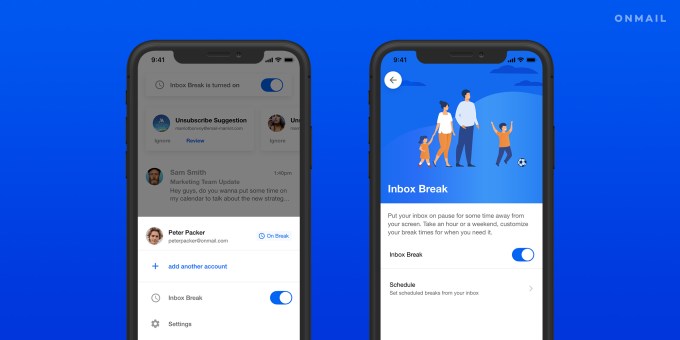
Image Credits: Edison
- Edison’s new email service OnMail has launched a new feature that gives you a break from receiving emails for a temporary period of time or schedule you designate. The “Inbox Break” option lets you pick which accounts to pause and optionally set away messages that automatically reply to emails while you’re on a break.
- Microsoft confirmed it would next month begin to transition its Android-based Office apps running on Chromebooks to web apps instead. “In an effort to provide the most optimized experience for Chrome OS/Chromebook customers, Microsoft apps (Office and Outlook) will be transitioned to web experiences (Office.com and Outlook.com) on September 18, 2021. This transition brings Chrome OS/Chromebook customers access to additional and premium features,” a spokesperson said.
Utilities
- Apple Maps expanded its native ratings and photos feature in the U.S. The feature, first introduced in iOS 14, allows users to review places like restaurants, shops and other businesses. In iOS 15, users can also thumb up and down specific factors like food, customer service, atmosphere and more, and can upload photos of their own to the listing.
- Google Maps is working to add toll prices to help users price their rides. A similar feature is already available in Google’s Waze app.
Government & Policy
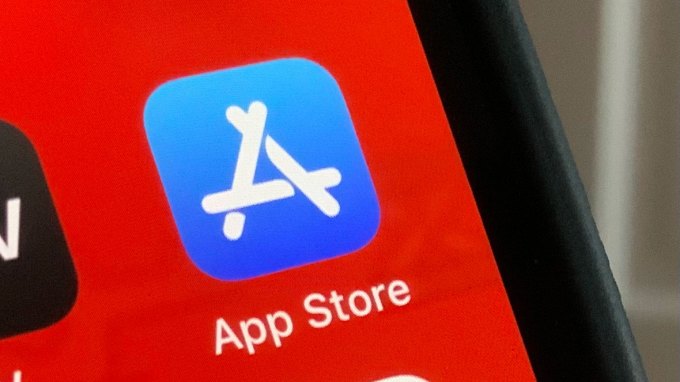
Image Credits: TechCrunch
- South Korea delayed the vote on a landmark bill that would prevent Apple and Google from forcibly charging commissions on in-app purchases within apps. If approved, developers would be able to offer alternative payment systems inside their apps. The bill, the first of its kind globally, was supposed to see a final vote on Wed., August 25, but was tentatively delayed until August 30, according to media reports. Apple has pushed back on the bill saying it will put users at risk of fraud and privacy violations.
- Chinese regulator, the Cyberspace Administration of China (CAC), on Friday proposed new guidelines that aim to forbid companies from deploying algorithms that “encourage addiction or high consumption” and endanger national security or disrupt the public order. Services also can’t create fake accounts or create other false impressions. And users will be able to turn off algorithmic recommendations. The rules appear to target companies like ByteDance, Alibaba Group, Tencent, Didi and others whose services have been built on top of proprietary algorithms. CAC will take public feedback about the guidelines through September 26.
Security & Privacy
- A report from MDM company Jamf uncovered the most commonly requested iOS permissions by analyzing a sample of nearly 100,000 apps from 2.5 million Wandera customers. The most common were Photos, Camera, Location and Microphone access, it found.
- An investigation by the Tech Transparency Project (TTP) found holes in the App Store’s child safety measures, noting it was too easy for kids and teens to access adult apps, due to lack of protections built into the apps themselves. However, the study didn’t enable parental controls which is the tools parents would presumably use to keep kids from accessing adult apps.
Funding and M&A
 Design and editing app Picsart raised $130 million Series C led by Softbank with participation from Sequoia, GSquared, Tribe Capital, Graph Ventures and Siguler Guff & Company. The round values Picsart at a near $1.5 billion valuation. The app has over 1 billion installs across 180 countries and more than 150 million MAUs.
Design and editing app Picsart raised $130 million Series C led by Softbank with participation from Sequoia, GSquared, Tribe Capital, Graph Ventures and Siguler Guff & Company. The round values Picsart at a near $1.5 billion valuation. The app has over 1 billion installs across 180 countries and more than 150 million MAUs.
 Mexican fintech Flink raised a $57 million Series B round of funding led by Lightspeed Venture Partners. The app allows consumers to participate in the stock market, and has grown to 1.6 million users, 85% of whom are first-time investors.
Mexican fintech Flink raised a $57 million Series B round of funding led by Lightspeed Venture Partners. The app allows consumers to participate in the stock market, and has grown to 1.6 million users, 85% of whom are first-time investors.
 African mobile payments platform OPay raised $400 million in funding led by SoftBank Vision Fund 2, with participation from existing investors Sequoia Capital China, Redpoint China, Source Code Capital and Softbank Ventures Asia. The round values the business at $2 billion.
African mobile payments platform OPay raised $400 million in funding led by SoftBank Vision Fund 2, with participation from existing investors Sequoia Capital China, Redpoint China, Source Code Capital and Softbank Ventures Asia. The round values the business at $2 billion.
 Meditation app Headspace announced plans to merge with on-demand mental health service Ginger, valuing the combined business of $3 billion with a headcount of more than 800.
Meditation app Headspace announced plans to merge with on-demand mental health service Ginger, valuing the combined business of $3 billion with a headcount of more than 800.
 London-based EV charging platform Bonnet raised $1.3 million (£920,000 total in new funding, including £850,000 in an equity financing round led by Ascension Ventures, with investors from Imperial College London and APX. It also won an additional £70,000 grant from Innovate UK and OZEV. The app gives drivers real-time data on charger availability and functionality and seller bundles of cheaper charging, which can be used across the network.
London-based EV charging platform Bonnet raised $1.3 million (£920,000 total in new funding, including £850,000 in an equity financing round led by Ascension Ventures, with investors from Imperial College London and APX. It also won an additional £70,000 grant from Innovate UK and OZEV. The app gives drivers real-time data on charger availability and functionality and seller bundles of cheaper charging, which can be used across the network.
 European stock trading app Shares raised $10 million in a pre-product seed round led by Singular for its app that would allow users to trade 1,500 stocks without paying fees, as well as start conversations with friends and learn from experts.
European stock trading app Shares raised $10 million in a pre-product seed round led by Singular for its app that would allow users to trade 1,500 stocks without paying fees, as well as start conversations with friends and learn from experts.
 Tencent has entered advanced stages of talks to lead a new $20-35 million investment round in Gurgaon-headquartered podcasts and audiobooks app Pocket FM. The terms being discussed would value the three-year-old company around $75-$100 million.
Tencent has entered advanced stages of talks to lead a new $20-35 million investment round in Gurgaon-headquartered podcasts and audiobooks app Pocket FM. The terms being discussed would value the three-year-old company around $75-$100 million.
 Estonia-based grocery delivery app Membo, which serves a European audience, snagged Y Combinator backing and will present during the incubator’s Summer 2021 Demo Day next week.
Estonia-based grocery delivery app Membo, which serves a European audience, snagged Y Combinator backing and will present during the incubator’s Summer 2021 Demo Day next week.
Reading Recs
- A decade and a half of instability: The history of Google messaging apps. Sixteen years after the launch of Google Talk, Ars Technica analyzes everything that went wrong — and continues to go wrong — across Google’s messaging app strategy. “…no single company has ever failed at something this badly, for this long, with this many different products,” the article snipes, before introducing the long table of contents to its many sections, each detailing the fate of an individual app. The article concludes that no one seems to be in charge of the company’s overarching messaging app strategy, as messaging isn’t treated as one of the key pillars alongside others like Search, Gmail, Chrome, Android, Docs, Maps and YouTube.
Downloads
Popcorn
A new startup called Popcorn wants to make work communication more fun and personal by offering a way for users to record short video messages, or “pops,” that can be used for any number of purposes in place of longer emails, texts, Slack messages or Zoom calls. While there are plenty of other places to record short-form video these days, most of these exist in the social media space, which isn’t appropriate for a work environment. With Popcorn, you can instead create a short video and then send a URL to that video anywhere you would want to add a personal touch to your message — like for outreach on LinkedIn or a quick check-in with a colleague, for example. The app is currently a free download on iPhone, iPad and Mac. (Read the full review here on TechCrunch.)
Luma
A new iPad drawing app called Luma connects the screen with real-world play by allowing kids (or anyone) to attach paper to their iPad then trace the lit-up drawing using a pen or pencil. Each drawing will connect to the previous one and can be colored in however the user sees fit. As kids draw, they’ll bring an audio story to life for a more immersive and creative experience. The app was built by Jonathan Wegener (Timehop co-founder, Snapchat designer), Bernardo Nunez (YouTube), Jeffrey Neafsey (Microsoft, Apple), Britt Hatzius and Ant Hampton. It’s backed by the founders of YouTube, Oculus, Eventbrite, Tumblr, HQ Trivia, Google Photos, Venmo, Tinder and more.
LOVE
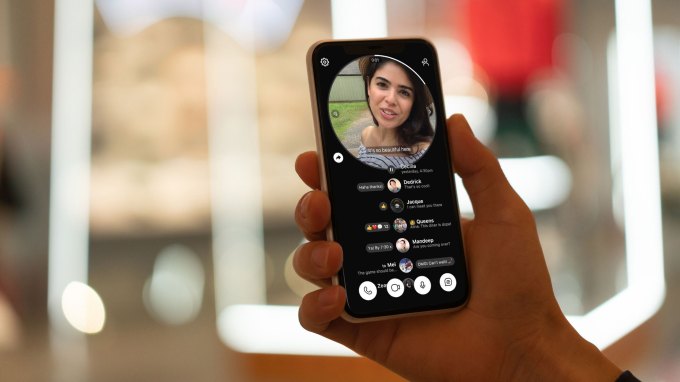
Image Credits: LOVE
A London-headquartered startup called LOVE, valued at $17 million following its pre-seed funding, aims to redefine how people stay in touch with close family and friends. The company is launching a messaging app that offers a combination of video calling as well as asynchronous video and audio messaging, in an ad-free, privacy-focused experience with a number of bells and whistles, including artistic filters and real-time transcription and translation features. But LOVE’s bigger differentiator may not be its product alone, but rather the company’s mission. LOVE aims for its product direction to be guided by its user base in a democratic fashion as opposed to having the decisions made about its future determined by an elite few at the top of some corporate hierarchy. In addition, the company’s longer-term goal is ultimately to hand over ownership of the app and its governance to its users. (Read the full review here on TechCrunch.)




















 Design and editing app Picsart
Design and editing app Picsart  Meditation app Headspace
Meditation app Headspace 



